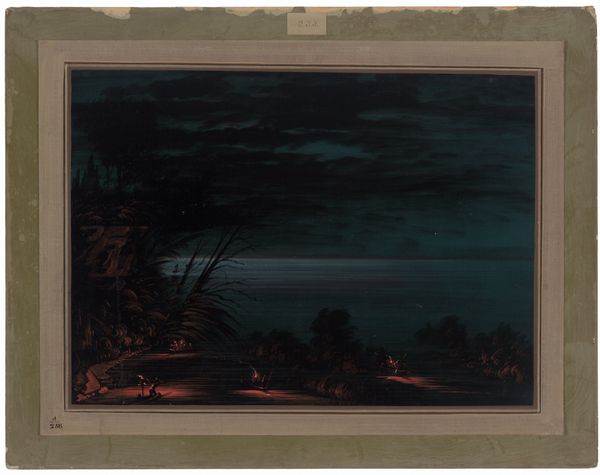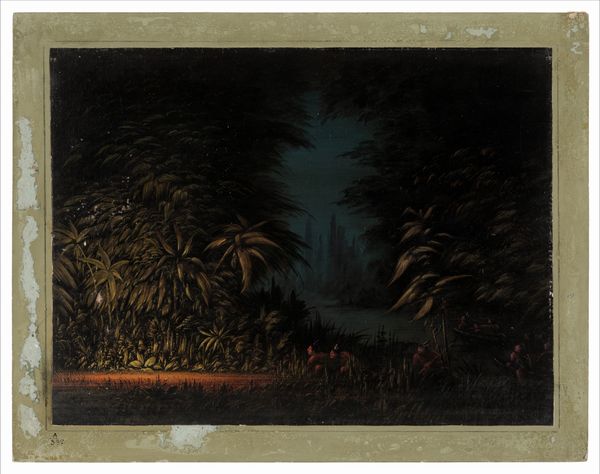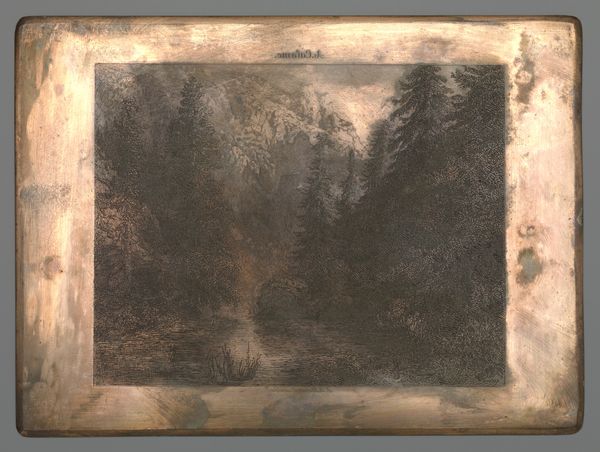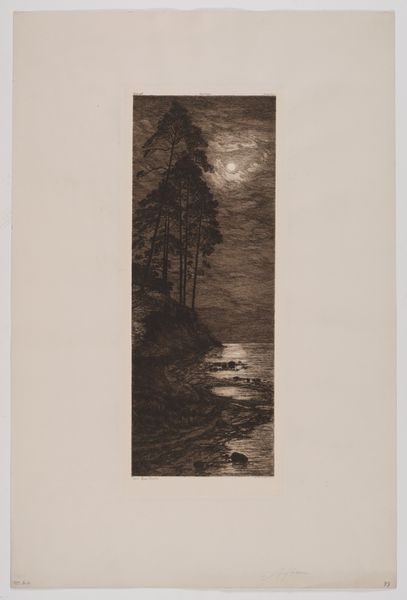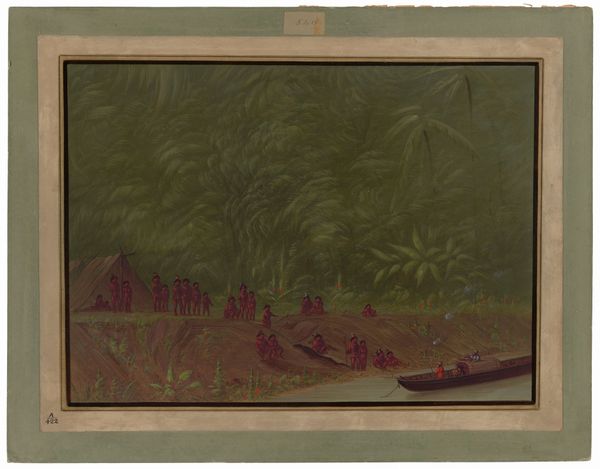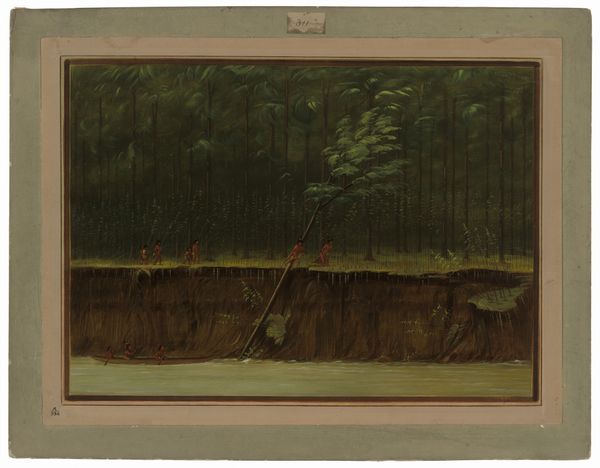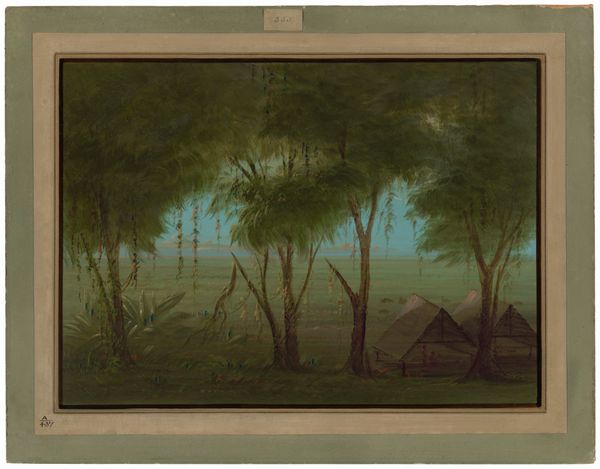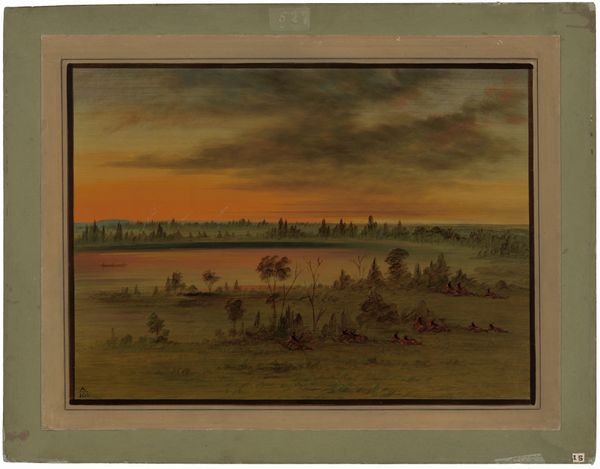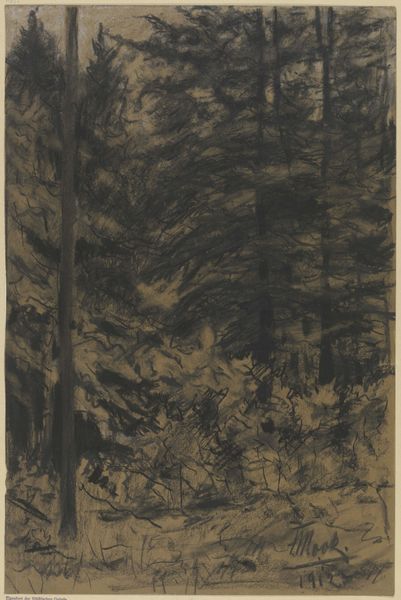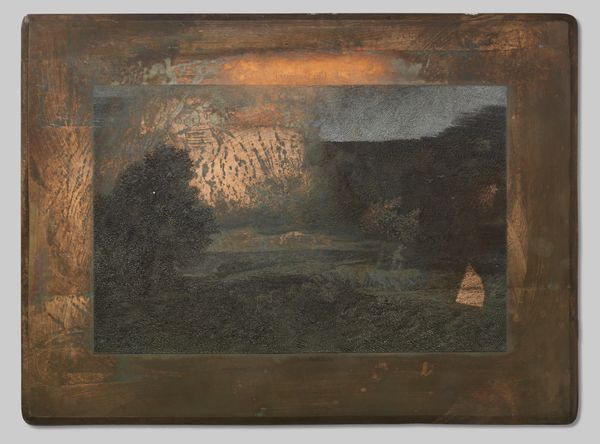
Dimensions: overall: 47.2 x 62.3 cm (18 9/16 x 24 1/2 in.)
Copyright: National Gallery of Art: CC0 1.0
Curator: Here we have George Catlin's "Bivouac of a Sioux War Party," believed to have been created between 1861 and 1869. He primarily worked in oil paint. Editor: The painting immediately gives off a somber atmosphere. The stark contrast between the warm campfire glow and the dark, encroaching forest really draws the eye. What’s interesting is how the flames almost look like blood bleeding into the soil beneath them. Curator: Indeed, Catlin was very interested in documenting Indigenous life in North America, traveling extensively to observe different cultures. The romantic landscape backdrop contrasts sharply with the almost industrial nature of the military enterprise. Editor: The way he depicts the fire, almost centrally located, it feels very primal and speaks to some fundamental aspect of the human condition—the creation of community and solidarity. Do we know more about how Catlin produced this piece? Was it in situ, for example? Curator: It's believed that some of Catlin's works were created based on field sketches and then elaborated on in his studio. He would have considered the materials used and how the process of producing art impacted the subject matter. In these Romantic landscape works of Catlin's the Indigenous party become props in an artistic performance, erasing their self-determination by turning them into noble savages for consumption. Editor: You know, there is something deeply unsettling about it when considering the social conditions from which it came; this vision of Indigenous life as purely aesthetic almost justifies what happened. Did Catlin consider that his method of creating art for consumption became its own type of commodification and oppression? The war party at the bivouac are consumed, not for who they are, but what we think we need them to be. Curator: The art historical record has often favored aesthetic analysis over such crucial socio-economic concerns. But yes, the commercialization of Catlin’s art reinforced stereotypes about Indigenous people, obscuring their complexities behind a facade. He made art for the consumption of the market, at their expense. Editor: Seeing how our conversation changes my perception... I thought I was only admiring how striking and raw it appears, but your remarks exposed so much historical weight here. It challenges me to think more carefully. Curator: Hopefully it also provides more perspectives on the significance, not just beauty, of this oil painting, and how art always operates within complex material and societal frameworks.
Comments
No comments
Be the first to comment and join the conversation on the ultimate creative platform.


